To answer the question—do Carolina Wrens reuse their nests?—you need to know what their approach towards nesting is like. They are no strangers to using places that are inhabited by humans and it’s nice to be kind to the birds while they are about to start laying eggs.
So, as they say in the movies, let’s start at the beginning.
What Do We Know about Carolina Wrens?
Carolina Wrens are found both alone and in pairs. And they usually tend to mind their own business. But if you find a bunch of them feeding, you might be looking at a family that has just finished its nestling period. These birds are likely to be near leaf litter and similar vegetation that is closer to the ground when doing so.
If there are downed trees in the vicinity, that’s also a good hang-out spot for them because they like to move around dark spaces near these trees. Old stumps and decaying logs are also not a turn-off for these birds.

Carolina Wrens are also capable of messing with squirrel nests looking for insects they like to feed on. So, tree trunks, vines, and branches are also not off-limits for these birds.
If these are the spots you are looking at, the answer to the question is—do Carolina Wrens reuse their nests?—might very well be a resounding yes. They have curved bills that they use rather efficiently to probe vegetation and also to bother large-sized bugs which take care of their food requirements.
But why pick places so close to the ground and near vegetation?
Well, these birds are not particularly strong flyers which might explain why they like staying closer to the ground and why their flight is brief. But that has also made them strong when it comes to defending their space from other birds. So, you can say that the Carolina Wrens are kind of territorial.
Author Note: About their nesting habits, these birds can turn pretty much any space into their home. That opens up the possibility of barns, garages, empty hornet nests, bird boxes and even hanging plants in your balcony.
Let’s look into that approach to see if man-made objects are also worth coming back to. That’s the other tangent to the question: do Carolina wrens reuse their nests?
Carolina Wrens and Their Quirky Nesting Habits
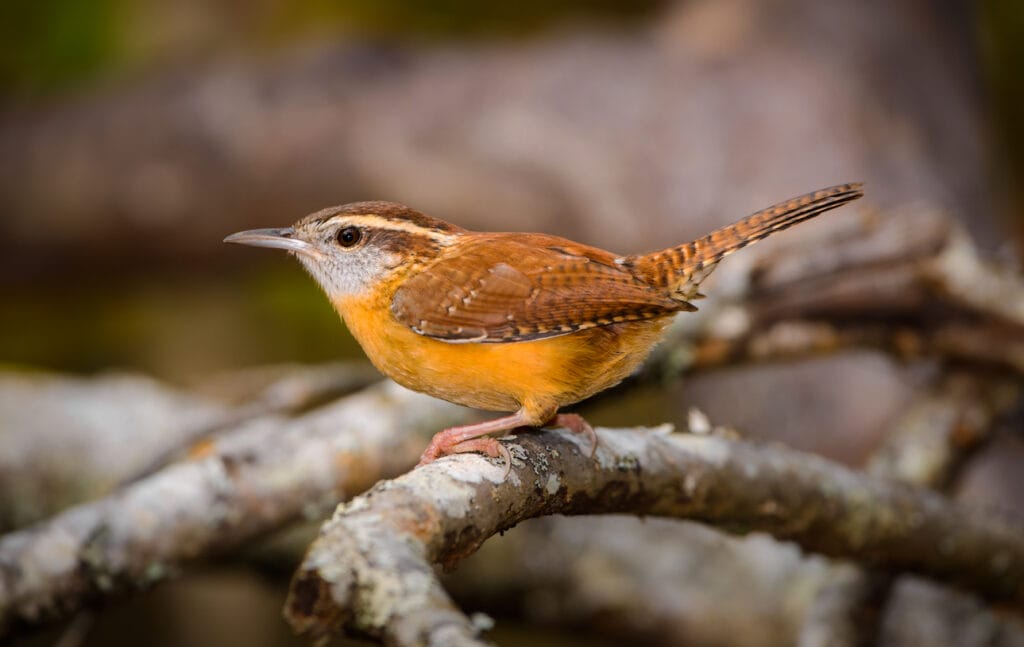
These birds essentially look for open cavities that are about three to six feet from the ground. Trees and overhangs are lovely spots for them. But if there is a little fauna on the ground, decaying or otherwise, it makes for a perfect nesting spot.
They also don’t shy away from spaces occupied by humans which means mailboxes, old flowerpots and even propane tank covers are not off-limits.
Leave a few old coats or boots outside and they will turn those into their homes too. It is unclear why they prefer human spaces but there are a few theories.
One of them is that this is a likely occurrence because our discarded excesses serve as easy food materials for the birds that don’t fly too much and need to feed their mate and young ones.
Another possible explanation is that they expect to be safe from other predator birds as long as they are close to human beings. Can’t argue with that logic, can you?
These birds also don’t stop with one nest because when the males are looking for a mate, they like to have home options.
Once the pairing is complete, of course, the female tends to pick the spot and both the birds start building a proper nest together. Interesting, huh? And after that, one of them stays home while the other becomes the food gatherer.
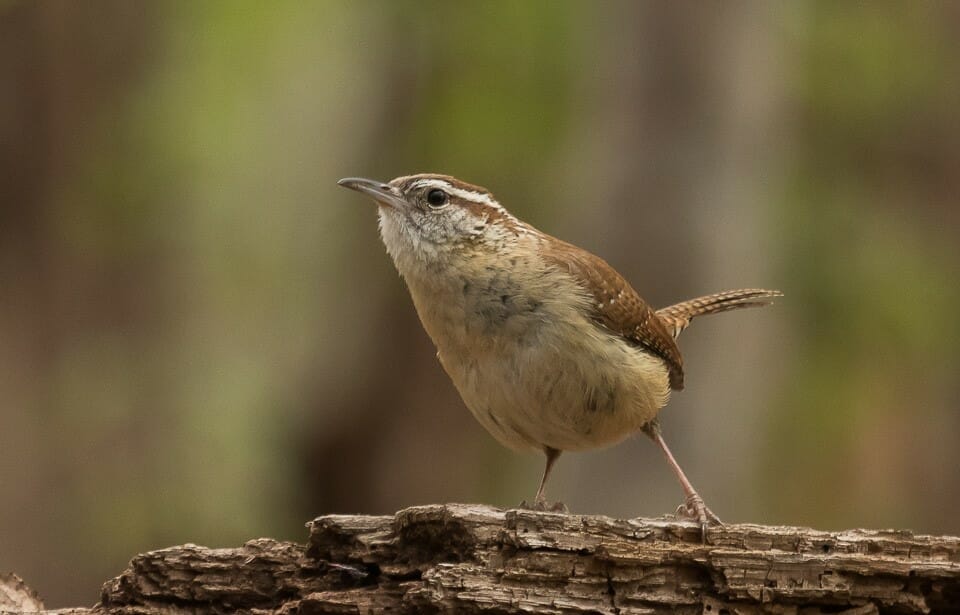
Fun fact—unlike humans, these birds don’t have traditional gender roles so either of them could be home or outside.
The birds usually take about a week or so to build their first nest. If the male bird is building more than one nest, it might take four extra days to build the next.
Now, before you ask yourself: do Carolina Wrens reuse their nests, you need to positively identify the nest. That can be done through these visual clues.
The Carolina Wrens build their nest in the shape of a cup and it usually appears to have a dome too. Fancy!
The nest will also have a side entrance and a ramp or a porch sort of an extension that is woven with the materials the birds have been able to gather. These materials could be anything from dry grass and dead leaves to pine needles, bark strips or recently-shed snakeskin.
They are also quite crafty with plastic and other string-shaped materials.
Author Note: The inside of the nest’s bowl is lined with more materials that the birds have collected. And this is usually done by the female. It’s kind of like their version of interior decoration and it happens after the incubation period starts.
This period lasts for 12 to 16 days followed by the nestling period which is for 10 to 16 days. You can expect the nest to be about 3-6 inches in width and 3-9 inches in length.
Typically, these nests can hold three to seven eggs and have one to three broods. But once they are done, do Carolina wrens reuse their nests?
This is an important question because, as mentioned before, these birds don’t shy away from building nests in human spaces using the items you might have simply placed in the balcony or discarded on your property.
If you’re trying to be kind to them, which is highly encouraged, here’s what you need to know.
Do They Reuse Their Nests?
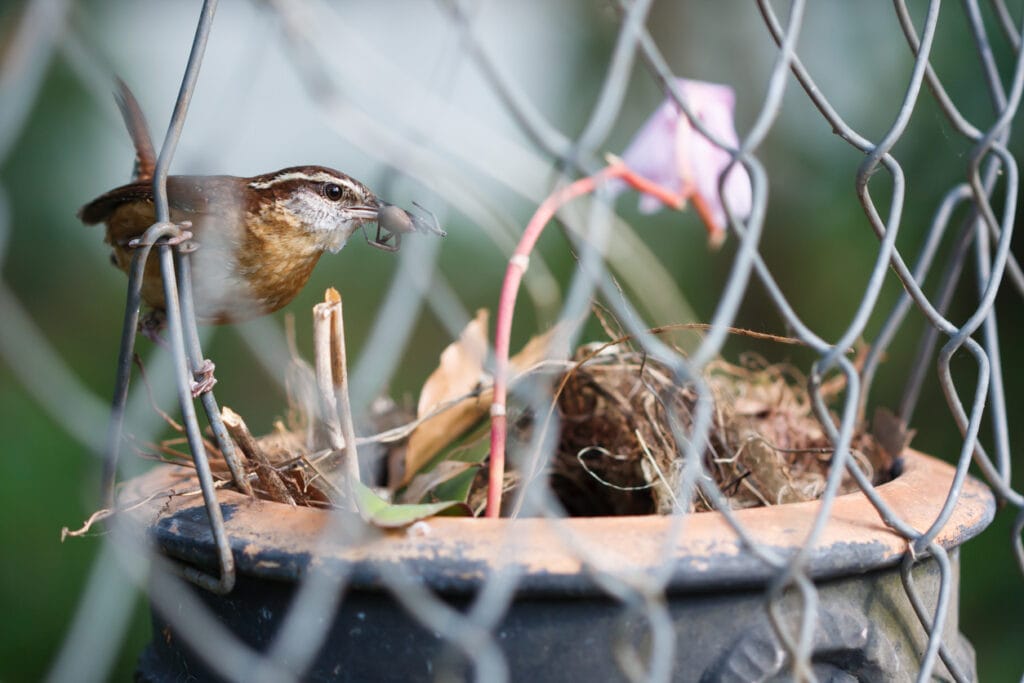
Now to the question, do Carolina Wrens reuse their nests?
Sometimes it might look like the birds have left the nest but they have been known to come back to reuse it at a later instance. This is because typically, the male builds the nest every season and sometimes they have to do this three to four times in a season.
So, it’s possible that they return to the one they just built instead of starting on a new one. If you’re looking to clear the space, you should wait for fall, which is when you can be sure that they are not going to return.
Sometimes, these birds also come back to the same spot but build a new nest before the incubation period starts. They might also take over nests of existing birds by destroying their eggs.
And sometimes, if their previously-built nest is still intact, they might just change a layer on the inside, give the nest a new lining and get on with it. The estimate is that this is likely to happen with one-fourth to one-third of the males.
But if you are looking to clean up a dirty shoe box with ectoparasites, here’s some trivia. Some of these birds can actually coexist with ectoparasites. These are parasites like lice and fleas. So, you might not get lucky after all. If the birds actually end up doing that, you might once again be looking at house wrens.
Author Note: Carolina Wrens mate for life and when they get together, they stay that way throughout the year. If the weather is right, they are capable of raising a maximum of four broods in that period of time.
Now, these birds also get along with other birds such as prothonotary warblers and bluebirds. If your Carolina Wren-looking birds are fighting with the others, that means you are looking at its cousin, the house wren.
Obviously, tree cavities and birdhouses are a favorite among all these birds. But the Carolina Wren is a creative one. The nest is probably important because it doesn’t fly all that much (or all that well). If you don’t believe us, leave your bike helmet out and see what they do with it.
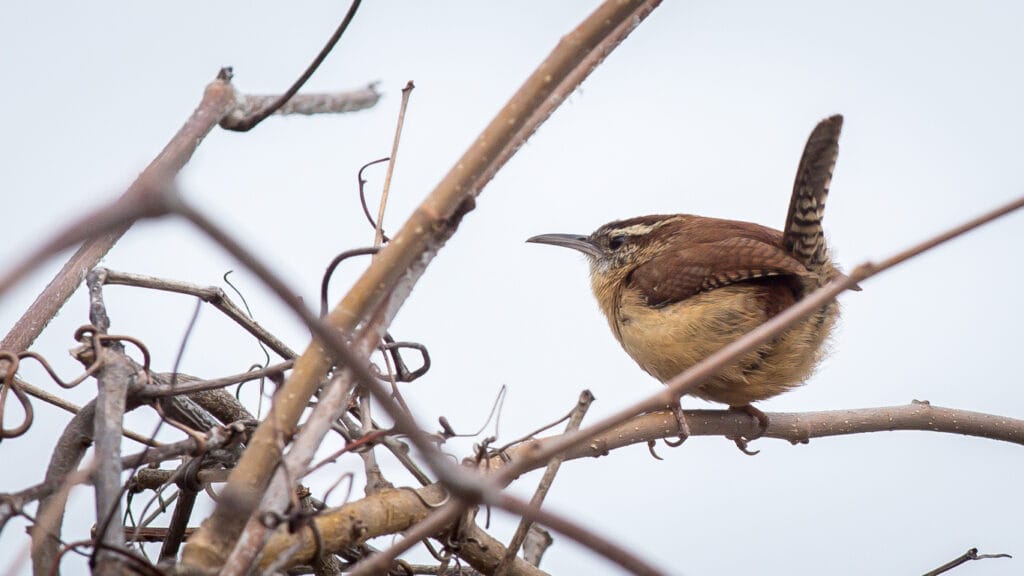
Wrapping Up
It can be very amusing to see that some of the places that Caroline wrens pick to build their nests are rather quirky.
Of course, you might be able to see the humor in it only if you’re not massively inconvenienced by its placement.
And we understand that that’s not always easy because even though these brown-colored birds are sweet and little, they are rather loud. On the bright side, they eat a lot of insects.
This is especially true when they have young ones to feed. So, if that’s a problem you are trying to solve, let nature take its course.
Identify the nest, check the calendar to see when they arrived and how long they are likely to be there. In case you don’t mind them coming back but find that the placement of the nest doesn’t work for you, wait for a few weeks and move the cavity once the birds leave it.
Keep it that way till fall and if it’s empty even then, you can go ahead and discard it. Good luck and happy bird sightings!
Fly high friends!
FAQ
The birds give the young ones about two weeks, 12 to 14 days to be precise, and then the family leaves the nest.
Once the eggs are hatched, the female bird will stay with the chicks and the male finds another cavity to sleep in.






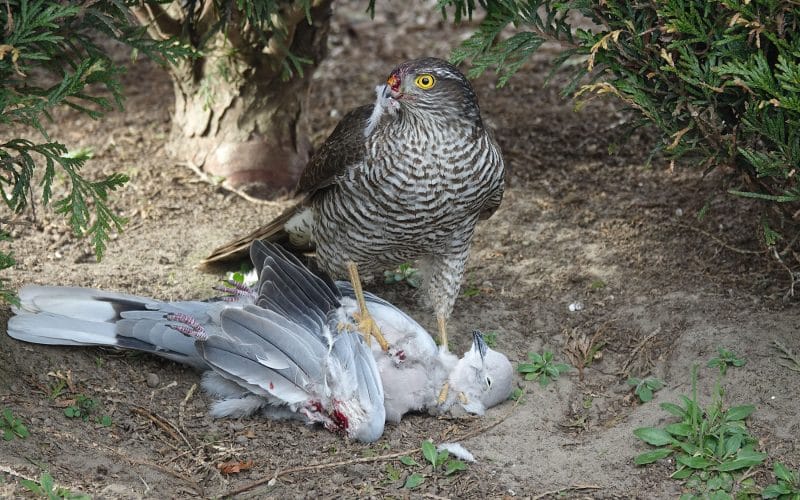
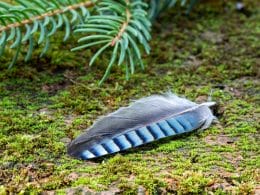

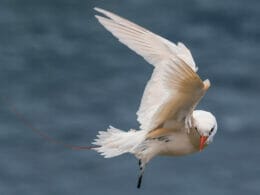
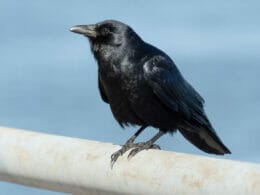
I have had a single Carolina Wren sleeping in my patio umbrella off and on for the last year. He has gotten use to me so much so that I can now take his picture, even with him looking at me only inches away. Nightly I check to see if he is tucked in. Well, tonight I had a great surprise, 2 sets of tail feathers, he has a partner! I will not open this umbrella this spring and summer for fear they won’t return. I live an hour outside of Houston Texas
I have an old locker on the carport which the door was left open They chose the top shelf to build their nest I sure enjoyed watching 😊
We are camp hosts at a state forest campground in Northwest Florida. We live in a fifth wheel trailer while here and shortly after getting set up we had Carolina Wrens make a nest in the tongue of the trailer. Since we knew we were staying here at least six months we had no problem with it. Well they just left the nest today with the five little darlings. Such a treasure that they all made it so well but also bittersweet that they are already gone.
We were fortunate to have a couple build a nest just outside our patio door in a decorative bucket on a low shelf. I feel honored that they trusted us with their home so close–and our back door is fairly busy.
I just love the people who don’t mind accommodating the little rascals by not opening their patio umbrella (see comment above), throwing out an old boot that has been graced with a nest, or otherwise being hospitable to the little feathered friends. We have been blessed by God with so many lovely creatures, and those of us who have the time to observe them are better for it.
A couple of times this Spring, we have visited a family homeatead in mid-Tennesse on a wooded hilltop. In March, I placed a Parlor Palm Plant on the sheltered side porch! In a return visit in May, I went to water ths palm! STOP! We discovered that a Carolina Wren has built a shelter in the pot! It seems the female is nesting next door. Great lookout for the male! The bird has become our friend and hollers loudly, perhaps to get our attention. The trade-off of a friendship for watering this plant is just fine with us!
Last year, they found a box at the back of the garage, but it was a practice one they did not use.
This year, ten feet away from last year’s practice nest, they found a box with the lid of another box acting as a portico, a roll of paper towels for cushioned support, and a small plastic garbage bag laying flat and acting as the doormat. This time, there are eggs. The question is whether to leave the garage door open for the next 180 days, and the answer is yes. Next year, thinking about making a wooden box outside the garage, lol.